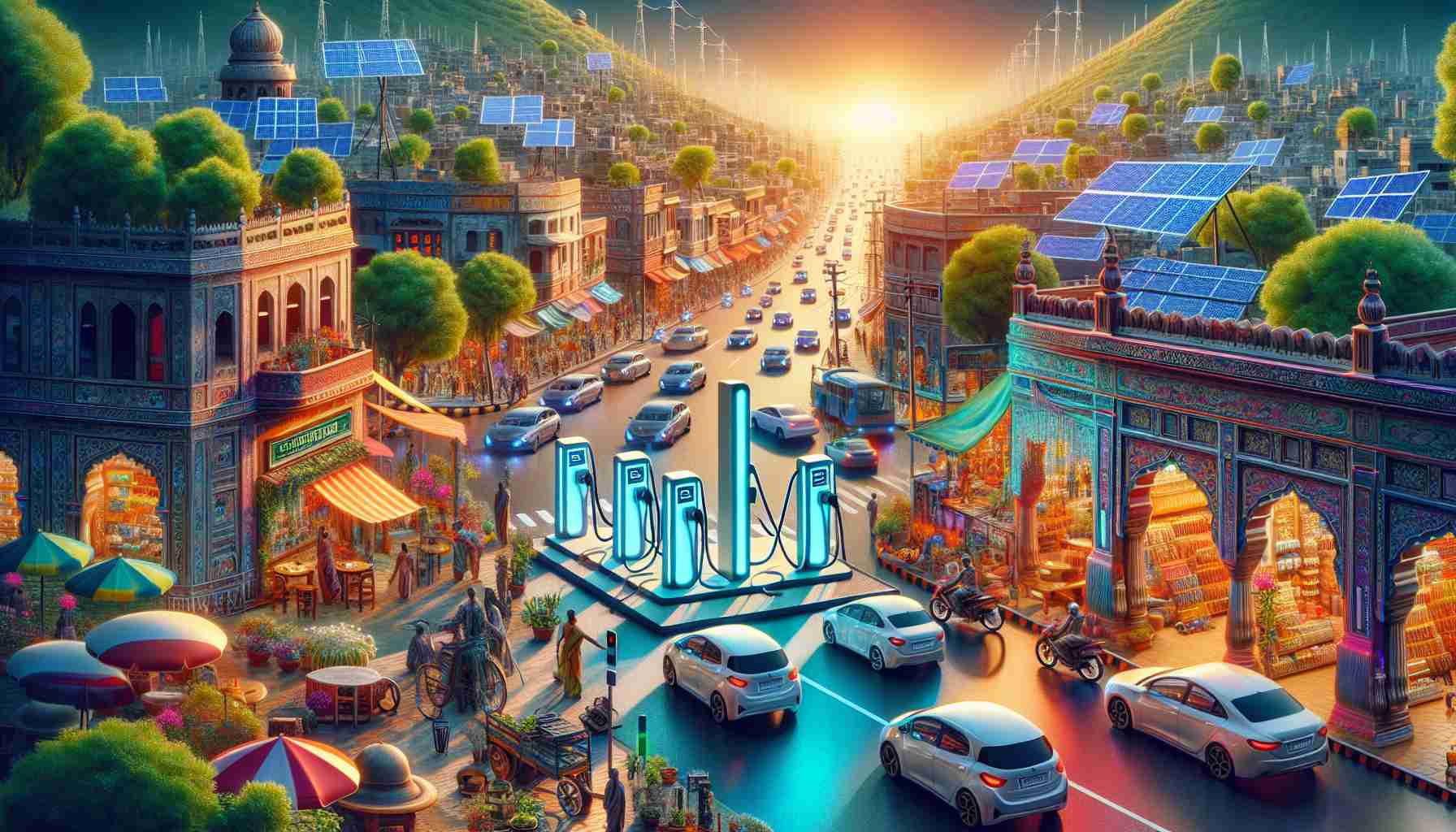Transformative Growth in Electric Vehicles
India’s electric vehicle (EV) landscape is on the verge of a radical transformation, with projections indicating a jump in EV market penetration from 2% to 9% by fiscal year 2030, as highlighted in a comprehensive report by Nomura. This remarkable shift aligns with the nation’s commitment to sustainable transport solutions.
Over the past two years, the share of electric vehicles in passenger cars has remained stagnant at roughly 2%. However, forecasts suggest a rise to 5% by fiscal year 2027 and 9% by 2030. The two-wheeler segment is also set to experience significant growth, climbing from 5.8% in FY25 to 20% by FY30.
To meet upcoming Corporate Average Fuel Efficiency regulations, automakers are pivoting towards the development of affordable, ready-for-market electric models. The recent Bharat Mobility Expo 2025 highlighted this transition, featuring innovative electric vehicles and groundbreaking advancements such as Advanced Driver Assistance Systems (ADAS).
The report underscores that the introduction of premium features—such as enhanced lighting and interactive controls—will further enrich the consumer experience. Moreover, suppliers are emphasizing integrated solutions to enhance performance while keeping costs manageable.
India’s automotive sector is poised for a groundbreaking decade, with electric mobility at the forefront of its journey towards sustainable environmental practices.
Broader Ramifications of Electric Vehicle Adoption in India
The anticipated surge in electric vehicle (EV) adoption in India carries profound implications for society and the economy. As the market penetrates from 2% to 9% by 2030, it signifies not just an evolution in transportation but a potential revolution in urban planning and community dynamics. Cities may adapt to accommodate increased EV use, leading to lower pollution levels and improved public health outcomes. Reduced dependency on fossil fuels can also elevate national energy security, making India less vulnerable to global oil price fluctuations.
Moreover, this shift aligns with cultural attitudes towards sustainability. As Indian consumers become more environmentally conscious, the acceptance of EVs could redefine mobility norms, fostering an ecosystem that values clean energy and innovative technology. This cultural shift may drive demand for sustainable practices across other sectors, creating a ripple effect throughout the economy.
From an environmental perspective, the growth in EV use presents significant benefits. With the potential reduction of greenhouse gas emissions, the efforts to combat climate change could gain momentum. Greater EV integration could also spur advancements in renewable energy—necessary to charge these vehicles—which would help diversify India’s energy portfolio and resilience.
Looking ahead, the global economy may witness competitive shifts. As India solidifies its position in the EV market, it could become a key player in the supply chain for electric components, thus influencing manufacturing trends worldwide. The collaboration between local startups and international investors is likely to shape this landscape, underscoring India’s role in the global transition towards sustainable transport solutions.
Electric Vehicle Revolution: India Set for Major Change by 2030
Transformative Growth in Electric Vehicles
India’s electric vehicle (EV) sector is on the brink of a monumental shift, with significant implications for the environment, economy, and consumer options. Current projections suggest a surge in EV market penetration from a mere 2% to a notable 9% by the fiscal year 2030, according to insights from a comprehensive report by Nomura. This anticipated growth aligns with the country’s dedication to adopting sustainable transportation methods, shifting away from traditional fuel sources.
Market Projections and Insights
Over the past two years, the participation of electric vehicles within the passenger car market has plateaued at roughly 2%. However, the future looks promising, with forecasts indicating an increase to 5% by FY27 and 9% by FY30. The two-wheeler segment is also expected to transform significantly, rising from 5.8% in FY25 to an impressive 20% by FY30. The growth trajectory highlights the increasing adoption of EVs across various vehicle categories.
Technological Advancements and Innovations
As India’s automotive industry prepares for upcoming Corporate Average Fuel Efficiency (CAFE) regulations, manufacturers are focusing on creating affordable electric models ready for market entry. The remarkable Bharat Mobility Expo 2025 showcased not just electric vehicles but also cutting-edge advancements like Advanced Driver Assistance Systems (ADAS). These technological innovations are set to enhance safety and user experience, bridging the gap between traditional and electric mobility.
Consumer Experience Enhancements
The report emphasizes the introduction of premium features into electric vehicles, including enhanced lighting systems and interactive controls, which aim to elevate the consumer experience significantly. Such enhancements are expected to attract a broader audience, dispelling common misconceptions about electric vehicles being less desirable than their gasoline counterparts.
Pros and Cons of Electric Vehicles in India
Pros:
– Environmental Benefits: Reduced emissions and a move towards cleaner air.
– Government Incentives: Policy support and financial incentives for electric vehicle buyers.
– Innovation and Technology: Introduction of features that enhance safety and performance.
Cons:
– Infrastructure Challenges: Limited charging stations can deter potential buyers.
– High Initial Costs: Although prices are decreasing, some electric models are still considered expensive.
– Range Anxiety: Concerns about driving long distances without charging options remain prevalent.
Use Cases of Electric Vehicles
Electric vehicles are ideal for urban commuting, where lower operating costs and zero emissions can significantly impact air quality. These vehicles are also well-suited for logistics companies, as they benefit from reduced fuel expenses over time.
Limitations for Consideration
Despite the optimistic growth outlook, the EV market faces certain limitations. Infrastructure for charging stations is still developing, and there may be a need for improved battery technologies to enhance performance and reduce charging times. Addressing these issues will be critical in fostering broader adoption.
Conclusion and Future Trends
India’s automotive landscape is indeed set for a transformative decade ahead, with electric mobility leading the charge towards sustainable practices. As manufacturers innovate, consumers can expect an influx of advanced electric vehicles equipped with modern technologies, ensuring that India’s commitment to sustainable transport not only meets regulatory standards but also aligns with consumer expectations.
For more information on the latest trends and innovations in the automotive sector, visit Hindu Business Line.












